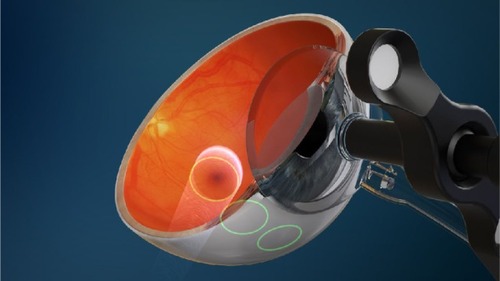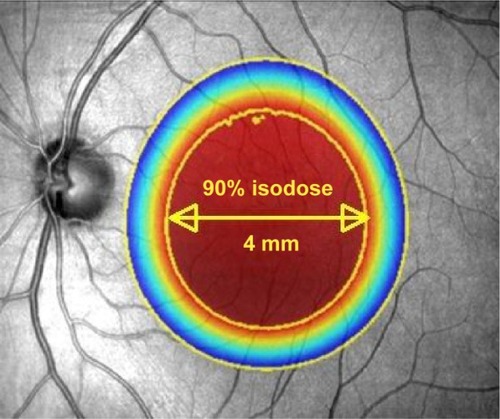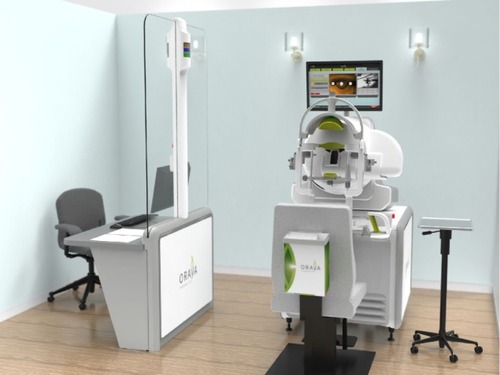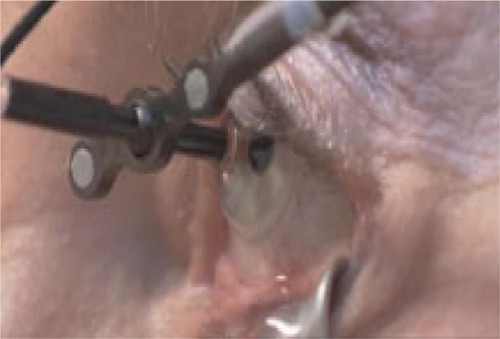Figures & data
Figure 1 Diagram showing the location of three collimated beams of radiation passing through the inferior sclera (green circles) to avoid the crystalline lens, during stereotactic radiotherapy.

Figure 2 Illustration to show the attenuation effect of the three collimated beams to deliver 90% of the desired radiation dose to a 4 mm diameter at the macula.

Figure 3 The room set-up of the IRay system.

Figure 4 A contact lens, with light suction mechanism, is used to keep the eye in position during treatment.

